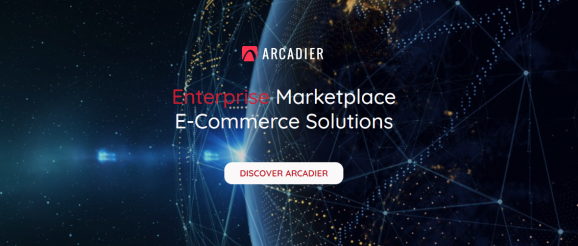Unlocking E-commerce Innovation with Headless Commerce: A Comprehensive Guide

Eight Key Benefits of Headless Commerce Headless commerce is a revolutionary approach to e-commerce marketplaces that decouples the front-end and back-end of a marketplace. This separation allows businesses to have complete control over the user interface and customer experience, while still leveraging robust back-end commerce functionality. The benefits of headless commerce are powerful and understanding these benefits is crucial when considering a transition to this innovative approach. The concept of headless commerce is relatively new. The term was coined by Dirk Hoerig, the founder of commercetools, in 2012 as a way to differentiate the existing single-head “suite” platforms from this new “multi-headed” approach. Introducing Flexibility Headless commerce arose as a response to the shortcomings of traditional platforms, which were often rigid and inflexible. Traditional commerce platforms often required significant backend work for each change made to the frontend, which was time-consuming and inefficient. Headless commerce, on the other hand, involves decoupling the front-end (the presentation layer) from the back-end (the commerce engine handling all product, pricing, and customer data, as well as the transaction). This separation enables them to operate independently and communicate via APIs on top of a microservice architecture. This decoupling allows for greater flexibility and agility, enabling businesses to react faster to market changes and customer demands. The rise of headless commerce was also driven by the increasing popularity of APIs. Over the years, headless commerce has evolved and become more mainstream. It has become the default for modern commerce technology, with 98% of eCommerce brands either currently using a headless approach or evaluating the option. Advantages of Headless Commerce This shift towards headless commerce has been driven by the need for businesses to deliver top-notch eCommerce experiences and to constantly test, optimize, and improve their platforms. The history of headless commerce is a story of innovation and adaptation in response to changing market conditions and customer needs. It represents a significant shift in the way businesses approach e-commerce, offering greater flexibility, agility, and efficiency compared to traditional commerce platforms, with a range of advantages: 1. Unlimited Customization One of the most significant benefits of headless commerce is the ability to have unlimited customization. This means businesses can have complete control over the front-end design and user experience of their storefront. Since the front-end and back-end are decoupled, updates and changes can be made to the front end without affecting the back-end functionality. This provides greater flexibility and agility for businesses and allows for faster experimentation and adaptation to changing customer needs and market trends. 2. Ease of Integration Headless marketplaces allow for easier integration with third-party applications and services, enabling businesses to quickly adapt to changing market conditions and customer needs. This can help grow e-commerce operational capabilities over time. The API-first approach of headless commerce facilitates seamless connections and data transfers between different software pieces, making integrations faster and more efficient. 3. Improved User Experience Similarly, adopting a headless approach empowers businesses to craft a more personalized and engaging customer experience. In a headless commerce setup, the frontend gains complete independence from the backend. This freedom enables businesses to seamlessly implement changes and updates to the customer-facing aspects of their website without grappling with the intricacies of the backend. This not only ensures better visibility, higher search engine rankings, and increased website traffic but also directly contributes to an enhanced user experience. The improved agility in managing the frontend leads to faster response times, a smoother interface, and an overall more satisfying interaction for the users. Headless allows a consistent customer shopping experience across various platforms and devices, from mobile to voice command. 4. Flexibility Another key advantage is the flexibility in how companies build and launch. This flexibility is crucial for future-proofing the e-commerce experience, particularly as sales channels become more data-centric. From Internet-of-things (IoT) devices to progressive web apps to voice data collected from smart devices, modern marketing requires providers to keep a finger on the tech pulse at all times. 5. Greater Personalized Shopping Experience Headless commerce offers more creative control than typical templates, pushing customer experience to the next level. Because customer data is more readily available, opportunities abound. This includes targeted marketing campaigns that highlight promotions based on user activity, and a more personalized overall customer shopping experience. 6. Speed and Efficiency Headless commerce can dramatically improve page load times, which is incredibly important for businesses with content-rich storefronts. This speed and efficiency can lead to improved conversion rates and higher sales numbers. 7. Personalization Driving Higher Conversion Rates Headless commerce empowers businesses to tailor a fully customized and personalized experience for their customers, with a particular focus on boosting conversion rates. This entails delivering targeted marketing campaigns that highlight promotions aligned with user activity, fostering a more personalized and streamlined customer shopping experience. The emphasis on personalization directly contributes to improving conversion rates and subsequently driving higher sales numbers. 8. Lower Total Cost of Ownership Using a headless architecture in e-commerce is cost-effective. A headless architecture allows for greater scalability, which can help improve customer experience as the business grows. Additionally, the headless architecture allows for greater flexibility in design and development, making the platform maintenance and upgrades cost-efficient. Talk to an Expert About Headless Marketplaces In conclusion, headless commerce emerged as a groundbreaking pivot from traditional ecommerce marketplaces, addressing their rigidity and inefficiency by decoupling the front-end and back-end operations. Headless commerce provides an avenue for unlimited customization, seamless integrations, enhanced user and customer experiences, superior flexibility, and significant cost-efficiency, among others. To take advantage of the accelerated adaptability and operational agility, talk to the experts at Arcadier here.
